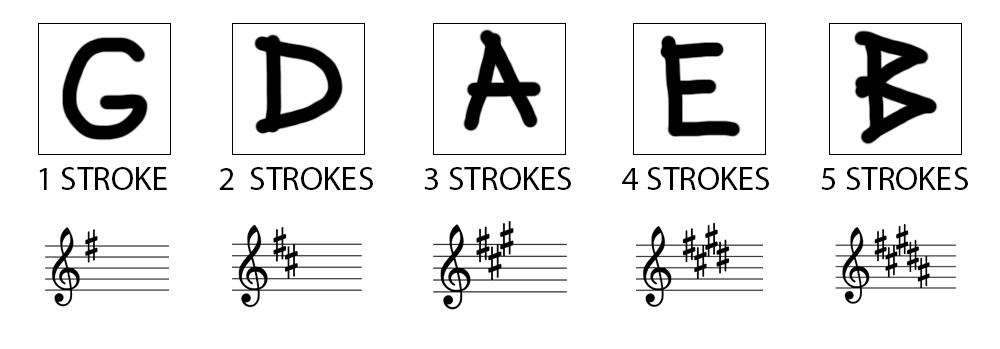CHROMATIC HALF STEP
Here we see a C moving up a HALF step to C# without changing it's letter or moving up on the staff. Because we didn't change letters, this is considered a CHROMATIC half step.
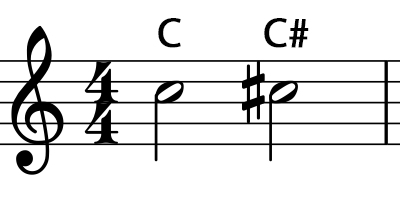
HOST- Jeremy Burns, Matthew Scott Phillips
GENRE- Music Theory
DURATION- 41:41
BUMPER MUSIC "Mjr. Cool" (Area 47 Music)
ANNOUNCER- Mike Cunliffe
Listen as we dig a little deeper into the major scale. We will also discuss key signatures and how to identify them by using the order of sharps or flats and a few other tricks we've picked up along the way. The circle of fifths will make its brief debut as will the concept of diatonic and chromatic steps.
Here we see a C moving up a HALF step to C# without changing it's letter or moving up on the staff. Because we didn't change letters, this is considered a CHROMATIC half step.

Here we see a C# moving up a HALF step to D while changing it's letter and moving up on the staff. Because we changed letters, this is considered a DIATONIC half step.
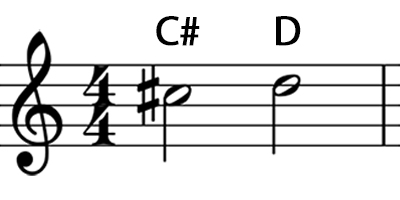
Here we see a C moving up a WHOLE step to D while changing it's letter and moving up on the staff.
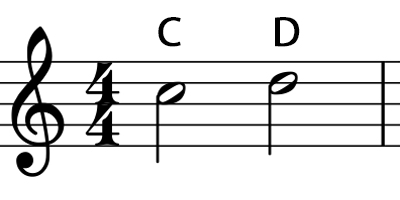
These are two exceptions where there is only a half step between two white keys.
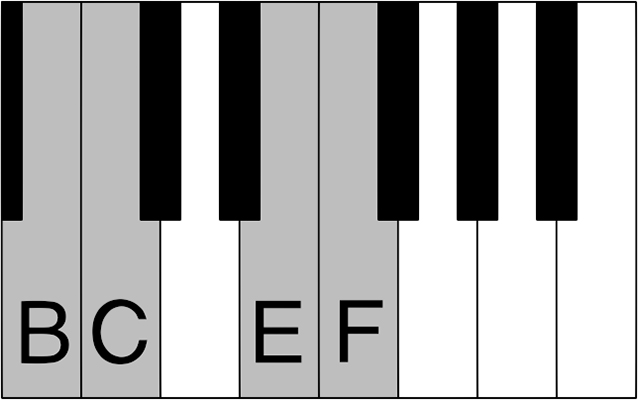
In the below example, the first measure shows a G note moving up a half step to G#. The following measure shows the same G note moving up a half step to Ab. In both measures, the second notes in the sequence (G# in measure 1 and Ab in measure 2) is the same note. It just has different letter names and accidentals. These notes are said to be ENHARMONIC to each other.

In the below example, we see the major scale pattern on a piano keboard (C major in this case). Most important, we see the pattern of whole steps (W) and half steps (H): W-W-H-W-W-W-H
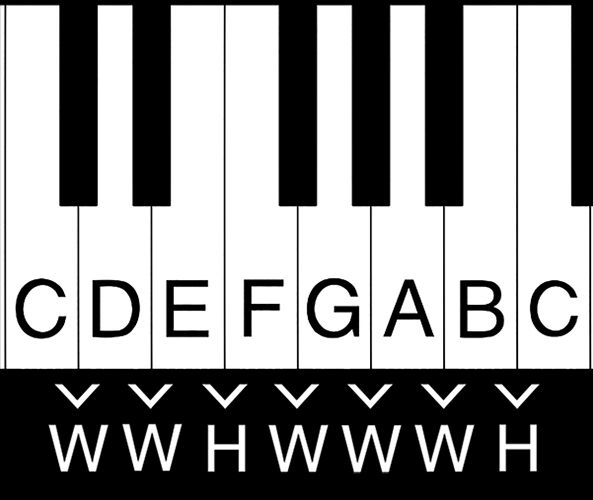
Below, we see the C major scale in music notation along with the whole note/half note pattern. This pattern will apply to any major scale, regardless of the key.

Here are 4 methods to help you identify and understand key signatures.
The following example will focus on the circle of fifths graphic below, beginning on the key of C and moving clockwise.
-The C major key signature has no sharps or flats.
-Go up a 5th from that point. So, count up from C: 1 (C) 2 (D) 3 (E) 4 (F) 5 (G)
-We landed on G.
-Count up the G major scale to the 7th note:
1 (G) 2 (A) 3 (B) 4 (C) 5 (D) 6 (E) 7 (F)
-Sharpen the 7th note you land on (F becomes F#)
-So the G major key signature has one sharp (F#).
-Each time you go up a 5th, from your new note, you add one sharp to the 7th scale note from that point.
-This will reveal the next note to sharpen, in the order of sharps, and add one more sharp to the new key signature.
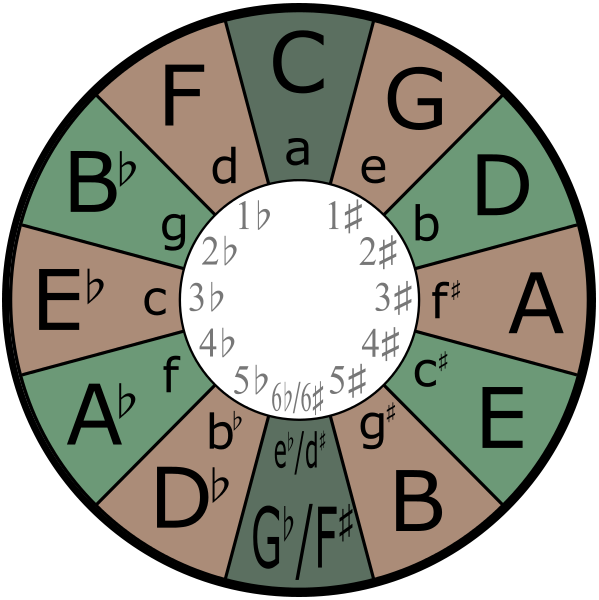
The following example will focus on the circle of fifths graphic above, beginning on the key of C and moving counter-clockwise.
-The C major key signature has no sharps or flats.
-Go up a 4th from that point. So, count up from C: 1 (C) 2 (D) 3 (E) 4 (F)
-We landed on F.
-Count up the F major scale to the 4th note: 1 (F) 2 (G) 3 (A) 4 (B)
-Flatten the note you land on (B becomes Bb)
-So the F major key signature has one flat (Bb).
-Each time you go up a 4th, from your new note, you add one flat to the 4th scale note from that point.
-This will reveal the next note to flatten, in the order of flats, and add one more flat to the new key signature.
-F# is always the first sharp in a sharp key signature.
-Each time you go up a 5th, you add another sharp.
-The resulting order of sharps is as follows:
1 (F#) 2 (C#) 3 (G#) 4 (D#) 5 (A#) 6 (E#) 7 (B#)
-Think of a sentence where all the words begin, in this order, with the given letter names:
Fat Charlie Goes Down And Eats Breakfast
-Bb is always the first flat in a flat key signature.
-Each time you go up a 4th, you add another flat.
-The resulting order of flats is as follows:
1 (Bb) 2 (Eb) 3 (Ab) 4 (Db) 5 (Gb) 6 (Cb) 7 (Fb)
-Think of a sentence where all the words begin, in this order, with the given letter names:
Big Ed And Dan Go Camping Frequently
-The last sharp in sequence is the leading tone (scale degree 7) to the MAJOR KEY given in the key signature.
-Below we see a key signature with 4 sharps.
-Notice the last sharp in the sequence, D#.
-D# is the leading tone to E.
-Therefore if we are in a MAJOR KEY, it is the key of E major.
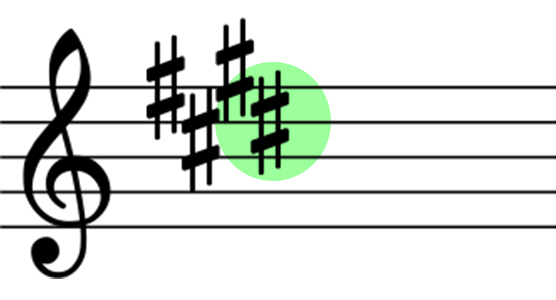
-The 2nd to the last flat in sequence is the root (scale degree 1) of the MAJOR KEY given in the key signature.
-Below we see a key signature with 5 flats.
-Notice the second to last flat in the sequence, Db.
-Db is the root of Db major.
-Therefore if we are in a MAJOR KEY, it is the key of Db major.
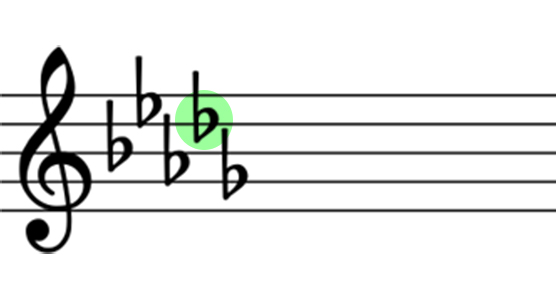
However, it's easy enough to remember that one flat represents the key of F major.
F major is the ONLY major natural key with a flat in the key signature.
-The last flat in the sequence is a PERFECT 4TH above the note of the MAJOR KEY given in the key signature.
-Below we see a key signature with 4 flats.
-Notice the last flat in the sequence, Db.
-Db is a PERFECT 4TH above Ab.
-Therefore if we are in a MAJOR KEY, it is the key of Ab major.
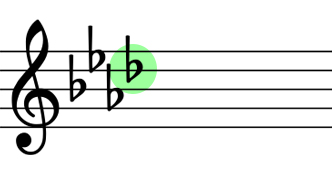
You can relate the first five keys, in the order of sharps, to the number of pen strokes it takes to draw the letters of those keys
